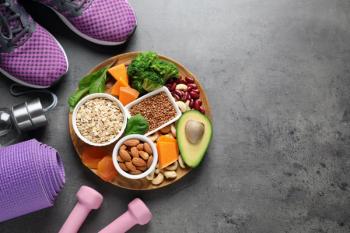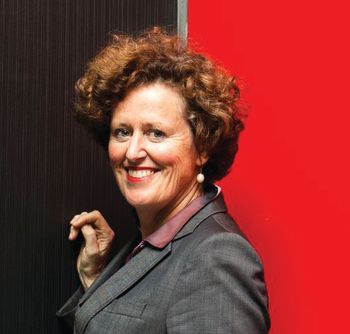
At-Home Brain Stimulation Technologies for Treatment of Depression
Key Takeaways
- At-home tDCS uses low electrical currents to modulate brain activity, offering a safe, nonpharmacologic depression treatment with minimal side effects.
- The PSYLECT study showed that regular home-based tDCS significantly reduces depression relapse rates, with 75% of participants maintaining wellness.
At-home transcranial magnetic stimulation offers a safe, effective way to treat depression, enhancing access and reducing reliance on medications.
Kultar Singh Garcha, MD, chief medical officer at Flow Neuroscience, discussed developments in at-home brain stimulation technology and its potential for accessible, effective treatment. At-home brain stimulation therapy via transcranial direct current stimulation intends to change mood via electrical currents, working to treat depression. This technology may improve access, save time, and help maintain treatment results.
Psychiatric Times: Can you describe how at-home brain stimulation therapy works, specifically how the technology has been adapted for safe at-home use?
Kultar Singh Garcha, MD: At-home brain stimulation uses a very low electrical current to gently guide the activity of the brain regions involved in mood. Flow uses transcranial direct current stimulation (tDCS), and the easiest way to think about it is that it speaks the brain’s natural language. Most treatments aim to influence mood chemically, but tDCS works electrically, using the same kind of signals the brain already uses. People often imagine something much stronger because earlier studies from the last century used higher currents; modern tDCS is nothing like that, which is what made it safe for at-home use. We work with 2mA¾that is extremely low. Most patients feel a bit of tingling or warmth on the skin at the very beginning, and then it fades. Many don’t feel anything at all. We’ve also built in several layers of safety so that the treatment stays controlled even when the patient isn’t in the clinic. The clinician prescribes the plan, sets the schedule in the app, and can see exactly when sessions are completed. Patients can only start a session on a day it’s been approved for, so there’s no risk of overdoing it.
A typical schedule is up to 5 30-minute sessions a week for depression treatment for an initial period of 3 weeks, but for relapse prevention, the study showed that 2 to 3 times a week were best longer term. Patients put the headset on, press start, and the stimulation runs automatically. Patients can sit, read, or do other routine activities during the session. However, even though the sessions are done at home, the clinician can follow every step remotely.
PT: Can you elaborate on the supervision element of this technology and how patients are taught to use it?
Dr Garcha: Once brain stimulation therapy is prescribed, the clinician explains to the patient how the treatment works and what to expect over the following weeks. After that, the clinician and patient go through the app and device together. They review how to place the headset correctly, how to start, and how to end a session. In the dedicated mobile app, the clinician sets the number of sessions and their duration. The patient can only start a session on a day when it has been scheduled, which helps prevent excessive use. Each device also comes with clear written instructions, and the app interface is designed to be simple and intuitive.
PT: Can you review the data and findings from the PSYLECT study?
Dr Garcha: PSYLECT is the biggest study so far looking specifically at whether home-based tDCS can stop depression from coming back. Everyone in the study had already completed their initial treatment and were instructed to use at-home stimulation twice a week for 6 months while researchers followed their progress. The results were very straightforward: out of 71 people, only 6 relapsed during the follow-up. Of those patients, 11 stopped treatment early, but even with those dropouts included, about 75% of the group stayed well. That is quite meaningful, because relapse is very common after the first treatment phase. Symptoms also did not plateau and continued to improve. On the Hamilton scale, scores dropped by about 36%. It is important to mention that the researchers tried to see if any factors predicted relapse¾age, gender, symptom severity, antidepressant use, behavioral therapy. In the end it was made clear that none of those factors had an impact. Ultimately, there were no severe side effects reported. One practical finding stood out: twice-weekly sessions were more effective than the weekly or monthly maintenance schedules tested in earlier studies. So, the rhythm of treatment seems to matter. In short, the study showcased that regular, home-based tDCS can help people stay well and avoid relapse, and it does that safely, without needing constant clinic visits.
PT: What previous research inspired or informed the development of at-home brain
stimulation?
Dr Garcha: The foundation is decades of work on tDCS in clinic settings. Early studies showed that low-intensity currents, usually around 1-2 mA, applied through scalp electrodes could safely regulate brain activity, with minimal side effects like skin tingling or itching. From there, researchers began to explore tDCS specifically for depression, and test whether tDCS could be used beyond the clinic, including for maintenance of results after an initial treatment, and learning how remote monitoring might work as telehealth emerged. Together, these efforts helped define the practical protocols of today’s at-home brain stimulation therapy, from low currents and session time to remote oversight.
PT: What are the potential benefits from this new type of administration of brain stimulation?
Dr Garcha: A big part of the problem today is that many patients do not respond well enough to antidepressants. They go through years of trial-and-error, switching medications, adjusting doses, trying combinations, and still do not get relief. Others might respond, but cannot tolerate the side effects, which often feel almost as hard to live with as the depression itself. So, when you introduce a clinically backed nonpharmacologic option that has very few side effects and can be used long-term, you are filling a very real gap in treatment.
Access is another advantage. Regular clinic visits are simply not realistic for a lot of patients because of cost, travel, or the fact that depression drains energy. Doing the therapy at home removes that barrier entirely. An important point is flexibility as well. tDCS does not have to replace medication. For some people it works well alongside antidepressants, and that makes it a valuable addition to the toolkit rather than an either-or choice. That matters when so many patients cannot get full relief from any single approach. And finally, there is a system-level benefit: clinicians can supervise sessions remotely, which means they can support more patients at once and shorten waiting lists.
PT: How do you see this therapy fulfilling unmet needs in depression treatment?
Dr Garcha: Besides access, flexibility, and minimal side effects, at-home brain stimulation works to solve a deeper structural problem: the lack of continuity in care. Currently, people wait months for an appointment, get 10 minutes with a clinician, and then are sent home with nothing to support them in between, but often a new prescription of antidepressants. This is not always about clinicians not doing enough, as in many regions there simply are not enough specialists, and in others the demand is so high that clinicians are overwhelmed. At-home solutions give patients something steady to rely on between visits, while still allowing clinicians to monitor progress remotely. It creates the kind of ongoing support the current system just cannot provide.
PT: What do you hope the future of this therapy and/or further research in this area will look like?
Dr Garcha: Looking ahead, I see at-home brain stimulation therapy integrated into standard guidelines on depression treatment. A general practitioner or psychiatrist will be able to consider and prescribe at-home brain stimulation in the same way as medications, psychotherapy, or clinic-based brain stimulation. On the research side, we are already moving towards personalized treatments. Depression treatment has been long based on a one-size-fits-all agenda, and brain stimulation techniques open ways to measure how the brain responds at the time treatment is provided.
PT: Thank you!
Dr Garcha is the chief medical office of Flow Neuroscience.
Newsletter
Receive trusted psychiatric news, expert analysis, and clinical insights — subscribe today to support your practice and your patients.











